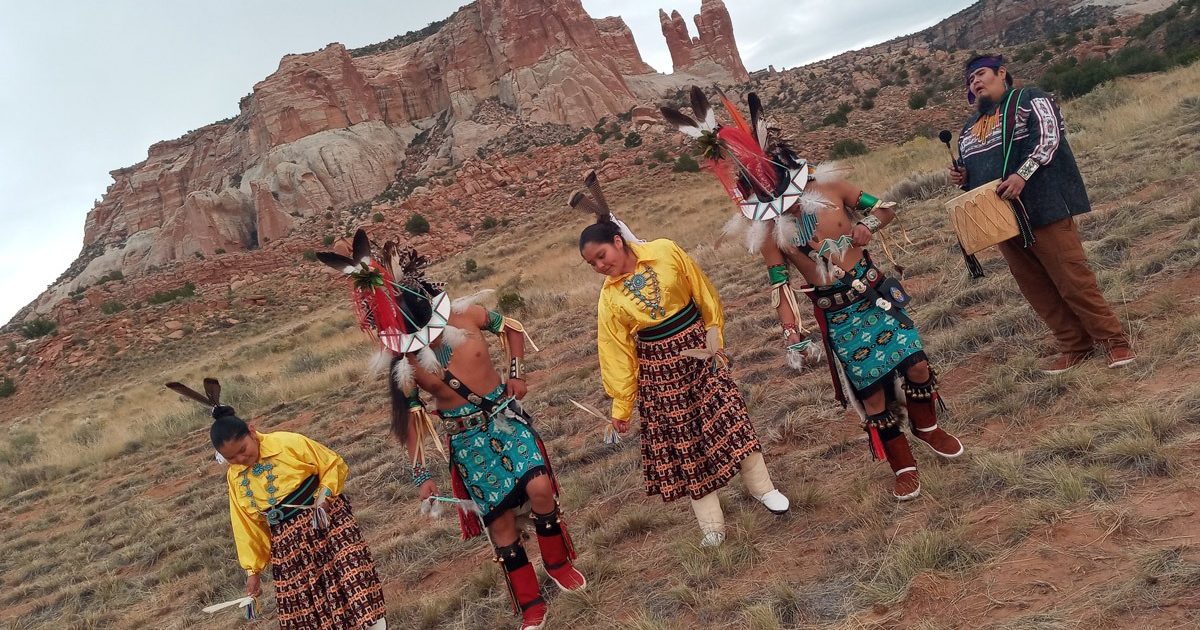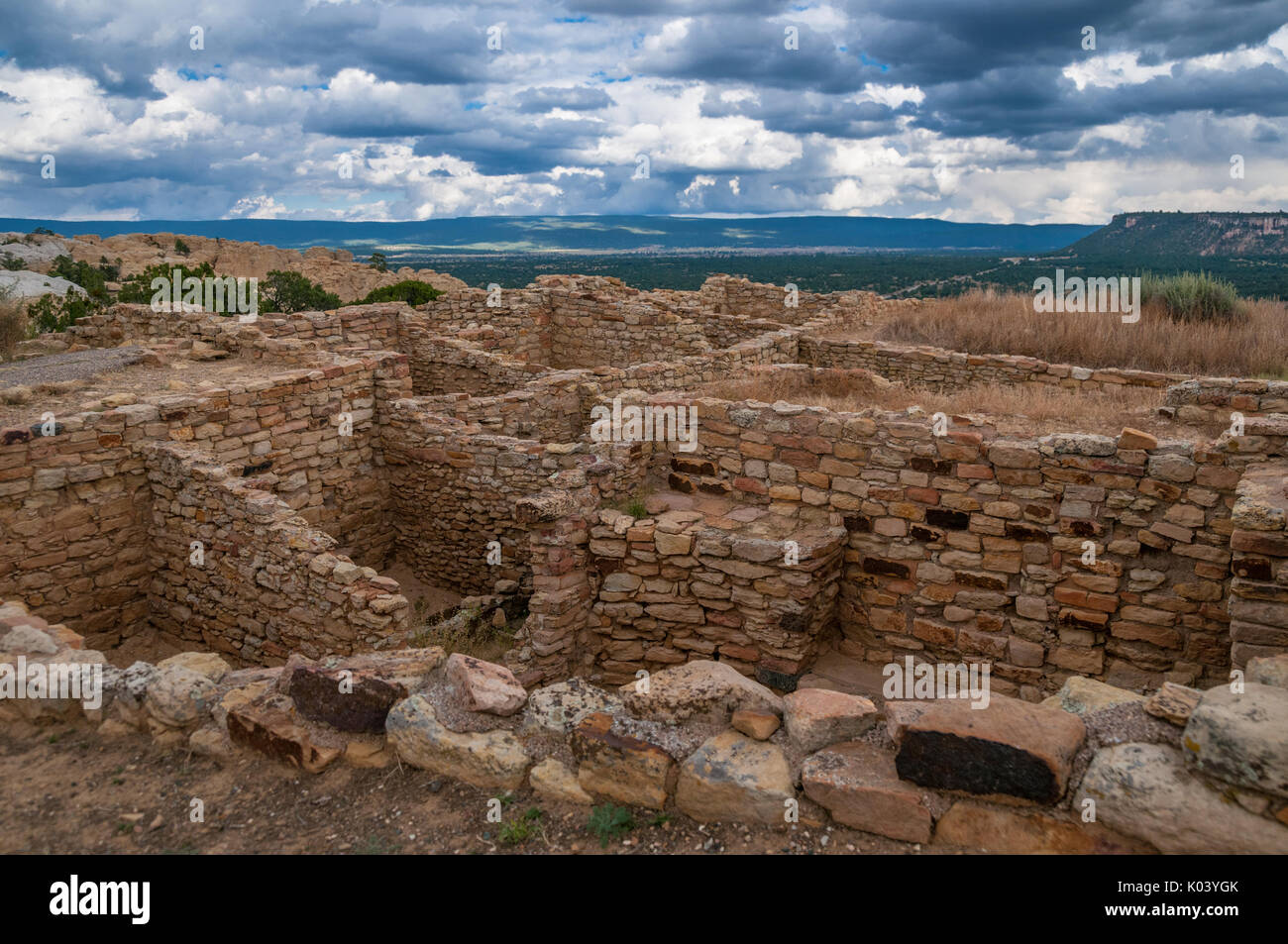
Guardians of the Word: Zuni Pueblo’s Fight to Preserve Its Ancient Language
ZUNI PUEBLO, NEW MEXICO – In the vast, sun-drenched expanse of western New Mexico, where the sacred Dowa Yalanne (Corn Mountain) stands sentinel over the ancestral lands, a quiet but determined battle is being waged. It’s a fight not with weapons, but with words – the ancient, melodic words of the Zuni language, a linguistic isolate with no known relatives, spoken for millennia by the Áshiwi, the Zuni people. In a world increasingly dominated by English, the Zuni community is pouring its heart and resources into an urgent mission: to ensure their language, the very heartbeat of their culture, echoes for generations to come.
The Zuni language, or Shiwi’ma, is far more than a means of communication; it is a repository of history, cosmology, traditional knowledge, and identity. Unlike most Native American languages, Zuni stands alone, a linguistic island that linguists have struggled to connect definitively to any other language family. This unique status underscores its profound antiquity and the distinct cultural path of the Zuni people. However, like many Indigenous languages globally, Shiwi’ma faces the existential threat of decline, a legacy of historical assimilation policies, boarding schools that punished children for speaking their native tongues, and the pervasive influence of mainstream media.

"Our language is the soul of our people," says Elder Robert Tsa-we-eh, his voice a gentle rumble as he sits in the Zuni Cultural Arts Council building, a hub for community activities. "When we speak Zuni, we are not just sharing words; we are sharing the wisdom of our ancestors, the stories of our land, the ceremonies that connect us to the universe. To lose it would be to lose a part of who we are, a piece of our very being."
While the Zuni language is relatively robust compared to many other Indigenous languages, with an estimated 9,000-10,000 speakers, the vast majority of whom reside within the Pueblo, the intergenerational transmission is weakening. Younger generations are increasingly fluent in English, and the fear is that the intricate nuances, the traditional narratives, and the ceremonial contexts embedded within Shiwi’ma could fade.
This urgency has fueled a comprehensive, community-led revitalization effort that spans from the earliest years of education through adulthood, embracing both traditional and modern approaches.
From Cradle to Community: A Holistic Approach
The Zuni Public School District is at the forefront of this linguistic revival. At the Zuni Elementary School, the sounds of Shiwi’ma greet students from the moment they step into the classrooms. Bilingual education programs are not just an add-on; they are foundational. Young students learn basic phrases, numbers, and cultural concepts in Zuni, integrated into their daily curriculum.
"We believe that language acquisition starts early, very early," explains Dr. Leanne Tse-Di-Ki, Director of Cultural Preservation for the Zuni Tribal Council, her office adorned with Zuni pottery and weavings. "Our children need to hear and speak Zuni from the moment they are forming their first words. It’s about creating an immersive environment where Zuni is not just taught, but lived."
The school district employs Zuni language instructors, many of whom are fluent elders and community members, bringing not just linguistic expertise but also deep cultural knowledge into the classroom. These teachers often share traditional stories, songs, and even basic ceremonial protocols, ensuring that the language is taught within its rich cultural context.
Beyond the elementary years, efforts continue into middle and high school, with dedicated Zuni language classes and cultural programs. The challenge here is often keeping teenagers engaged amidst the pull of mainstream culture and media. To combat this, educators are finding innovative ways to make Zuni relevant and exciting. This includes incorporating Zuni into art projects, creating Zuni-language videos for social media, and even developing Zuni-themed video games that teach vocabulary and grammar.

"When I first started, it felt a little awkward speaking Zuni in class," admits Kiana Lente, a 16-year-old student at Zuni High School, giggling shyly. "But then our teacher started showing us old Zuni cartoons, and we even made a TikTok video speaking Zuni about our daily lives. It made it cool. Now, my friends and I try to use Zuni phrases outside of class, too. It feels like we’re connecting to something really old and powerful."
Beyond the Classroom Walls: Community and Technology
The revitalization efforts extend far beyond formal schooling. The Zuni Pueblo has established community language classes for adults and families, recognizing that language learning is a lifelong journey. These classes often pair fluent elders with younger learners, fostering intergenerational bonds and allowing for organic language transmission that mirrors traditional learning methods.
"Our elders are our living libraries," says Mr. Tsa-we-eh. "They carry the deepest knowledge, the songs, the prayers, the history. When they teach, it’s not just a lesson; it’s an experience. They are passing on a worldview."
One particularly successful initiative is the "Grandparents as Teachers" program, where elders are trained to lead small, informal language circles in community centers or even their own homes, providing a comfortable and culturally familiar setting for learning. This model has proven effective in reaching those who might feel intimidated by a formal classroom setting.
Technology also plays a crucial role in Zuni’s language preservation strategy. The Pueblo has invested in creating digital resources, including online dictionaries, phrasebooks, and audio recordings of traditional stories. A dedicated team is working on developing a Zuni language app that can be downloaded on smartphones, making learning accessible anytime, anywhere. This digital archive also serves as a critical repository for the language, safeguarding it for future generations even if spoken fluency were to diminish.
"We have to meet people where they are," states Dr. Tse-Di-Ki, gesturing towards a computer screen displaying a prototype of the Zuni language app. "For many of our youth, their lives are online. If we can bring Zuni into that space, make it interactive and engaging, then we’re much more likely to succeed. It’s about blending tradition with innovation."
Challenges and the Road Ahead
Despite these comprehensive efforts, significant challenges remain. Funding is a constant concern; maintaining programs, training teachers, and developing new resources requires substantial financial investment. The sheer breadth and depth of the Zuni language, with its complex grammar and extensive vocabulary, also present a pedagogical challenge. There are limited standardized teaching materials, requiring educators to often create their own curriculum from scratch.
Moreover, the allure of English, the language of economic opportunity and broader societal communication, is powerful. Many Zuni youth face a balancing act between embracing their cultural heritage and navigating the demands of the modern world. The legacy of historical trauma, where speaking Zuni was actively suppressed, also continues to cast a long shadow, requiring sensitive and culturally informed approaches to healing and re-engagement.
Yet, the determination within the Zuni community remains unwavering. The Zuni people understand that their language is not merely a tool for communication, but a sacred trust passed down through countless generations. It is the vessel through which their unique worldview, their spiritual connection to the land, and their identity as Áshiwi are maintained.
"Every word spoken in Zuni is an act of resistance, an act of sovereignty," says Elder Tsa-we-eh, a glimmer of fierce pride in his eyes. "It says: ‘We are still here. Our way of life is still strong. Our voice will not be silenced.’"
The future of the Zuni language is not guaranteed, but the concerted, passionate efforts of the Zuni Pueblo offer a powerful model of Indigenous resilience and self-determination. From the early immersion classes to the elder-led community circles and the cutting-edge digital initiatives, the Zuni people are weaving a vibrant tapestry of language and culture, ensuring that the whispers of their ancestors will continue to echo across the high desert, a testament to the enduring power of words. The fight for Shiwi’ma is a fight for identity, and it is a fight the Zuni are determined to win.


